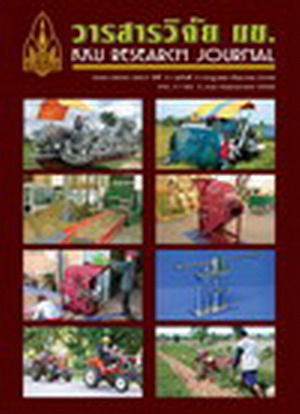Identification of the Anopheles dirus Species Comple’ in Thailand Using rDNA ITS2 Allele-specific PCR (ASPCR) and Sequence Characterized Amplified Region (SCAR) Markers(Thai)
Main Article Content
Abstract
The identification of Anopheles dirus Peyton and Harrison species was initially carried out using the rDNA ITS2 ASPCR and SCAR markers. The former method showed better specific results of amplified DNA bands. The D-U/D-AC primer pair could be used for identification of species A and C, with the amplified products of 562 bp and 360 bp for species A and the single amplified band of 360 bp for species C. In addition, the D-U/D-B and D-U/D-D primer pairs were clearly identified as species B and D respectively. The specific amplified DNA fragment of species B was 510 bp and that of species D was 360 bp. These primer pairs were thus used to identify A. dirus species of 327 samples collected from 5 different field sites including Rayong, Kanchanaburi and Nakorn Phanom provinces from August to November 2002. The A. dirus samples of 300, 11 and 17 individuals were species A, C and D respectively. However, there were no species B found in our collection.

